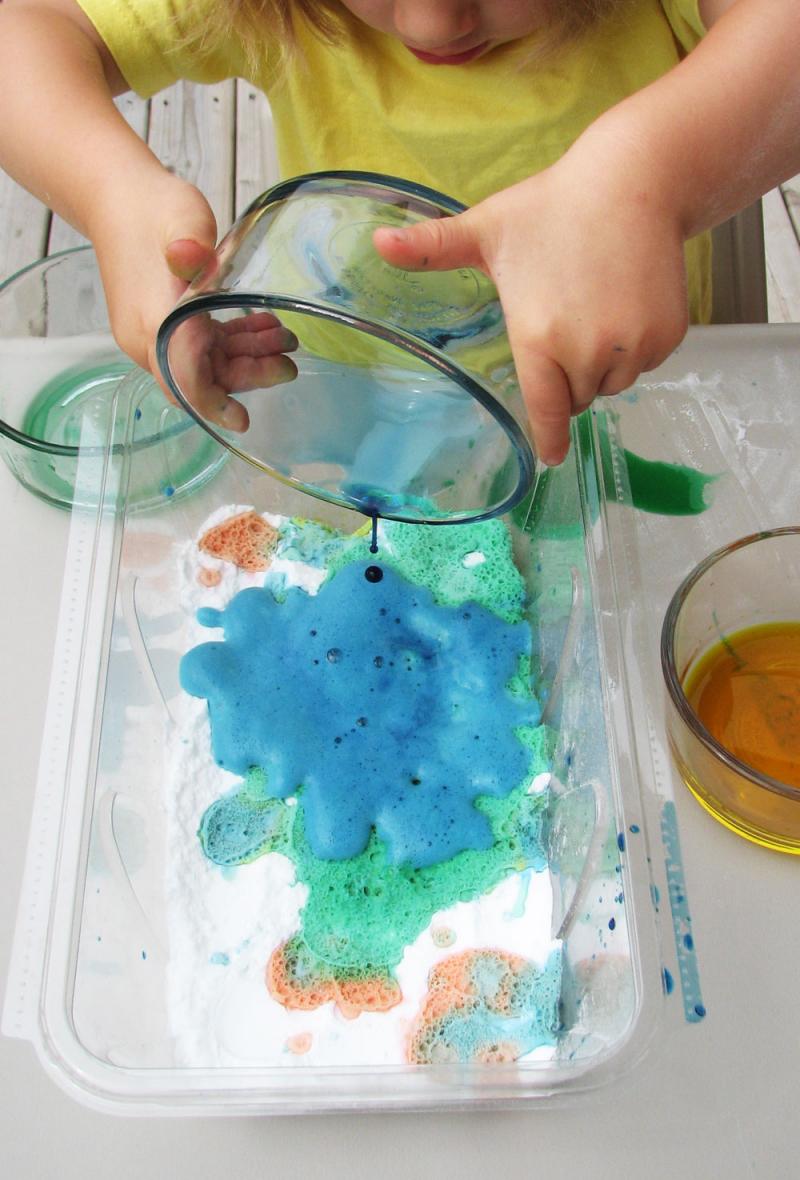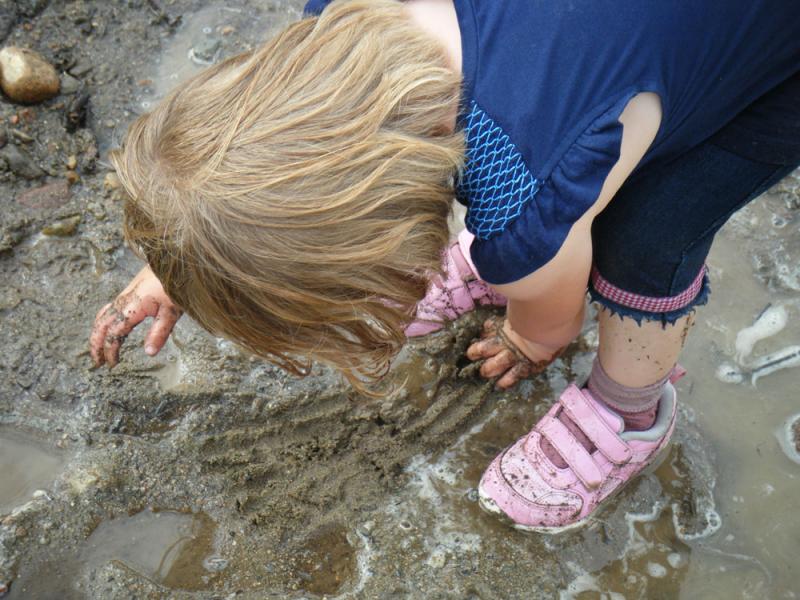
“When my daughter was about seven years old, she asked me one day what I did at work. I told her I worked at the college ‑ that my job was to teach people how to draw. She stared back at me, incredulous, and said, ‘You mean they forgot?’”
~ Howard Ikemoto, artist
Did you know you are creative? Really you are.
Do you sing in the shower?
Do you enjoy baking cookies and decorating birthday cakes?
Do you doodle on a memo pad while talking on the telephone?
Do you mediate your kids' arguments?
Did you answer yes to just one of these questions? Well then guess what?
You are creative.
![]() How to Make Art When You Don't Know How to Make Art
How to Make Art When You Don't Know How to Make Art
We often associate being creative with being able to paint and draw. But it's much more than that. Creativity is thinking. Creativity is doing. Being creative is finding out that there is more than one way to solve a problem. Being creative is trying something new.
As a parent, it is not your job is not to “build” a creative child, but rather to encourage your child’s natural inclination to be creative. The goal is to support, rather than stifle.
To help you out, I’ve compiled a list of things you can do to encourage creativity in your children.
1. Designate an area of your home: the "Creative Corner." Keep it stocked with costumes, board games and art supplies like pencils and sketch paper. If you're feeling ambitious, make a Creativity Machine.
2. Allow time for non‑representational art making. Don't insist that your kids reproduce images exactly. Just wait and see what develops. Similarly, don’t hover. It’s a creativity killer. Imagine if one of your peers asked you to draw a picture and proceeded to sit down to watch it happen. Chances are you would feel a lot of pressure. Am I right?
3. Highlight individuality. A good way to do this is through exposure to art. Take your kids to museums and galleries. Discuss what you see and encourage children to share their opinions.
4. Children develop problem-solving skills by interacting and working with others. So try initiating group projects (with siblings, cousins, friends). Tonight, why not try a “pass the drawing” game at the dinner table where each person adds to the picture.

5. Hands-on science experiments can be as creative as art projects. From growing plants to collecting and observing beetles, there is a lot to learn from nature.
6. Encourage children to play (yes, even your older kids) and surround them with objects that stimulate play. Books, blocks of all shapes and sizes, boxes, balls, puzzles and dominoes are all great, especially when your kids find new and unusual ways to use them
7. Play music and have dance parties! Introduce many different styles by casually switching the radio station from time to time. If possible, take your kids to live musical events.
8. Make mistakes! One of the most important lessons you can teach your children is that mistakes are an important part of learning and discovery. Illustrate this idea in an eraser‑free art-making session where your kiddos are encouraged to ‑ instead of erasing an "error" - change it into something else. Before long, “going with the flow” will become second nature.

9. Drama is a wonderful way to get the creative juices flowing. For shy children, you can use masks or puppets.
10. Initiate storytelling and/or daydream sessions whenever possible. Children aren’t the only ones who can take part. You’ll feel the benefits as well.
11. Always consider your comments and actions and the long‑term effects they have on a child's ability and willingness to display creative thought. Refrain from “fixing” the drawing your child is working on. Stop yourself from telling her that the flowers are too big and the sky should be blue and not green. Be a cheerleader, not a critic. However, as a cheerleader, you may at times be faced with a losing team. It's important to be as genuine during times of frustration and loss as you are during times of success.
12. If your child asks for help when making a drawing, don’t take it as an invitation to jump in and finish the job. If absolutely necessary, you can sit down and say, “This is how I do it ... shall we try this together?” and then let your kiddo get back at it. However, try as much as possible to let your child work through the problem on her own and whatever you do - don’t change her work and do not criticize.
13. Be sure to praise effort as well as accomplishment. Remember, creativity is all about doing, so your children should know that the process is as important (if not more so) than the product.

14. Embrace the mess! Being creative means getting dirty sometimes. Not only is it okay, it’s necessary. Breathe deep. Plan ahead by covering the floor with a drop cloth or letting your kids paint outside (with mud!), or in the bathtub.
15. Boredom is a good thing. In fact, boredom is just one step away from the next great idea.
16. Be careful to celebrate your child’s creative accomplishments wisely. If every inventive effort results in a reward, your children will lose the excitement of creating just for the sake of trying something new.
17. Every once in a while, when your child asks you a question, say, “I don’t know”, even if you do. You and your youngster can then go searching for the answer together. This way, he will find out that searching is just as exciting as knowing.
18. Limit screen time. Enough said.
19. Model creativity. This doesn't mean that you have to replicate all the craft projects you see on Pinterest. What it does mean is that if your kids see you trying new things, they will be more likely to do the same. Check out "How to Make Art When You Don't Know How to Make Art".
20. Quit saying, "I'm not creative", "I don't have a creative bone in my body" and "I wish I had some talent". The truth is, you are creative. Remember that.
What do you think? Would you add anything to this list?
Image Source: FreeImages